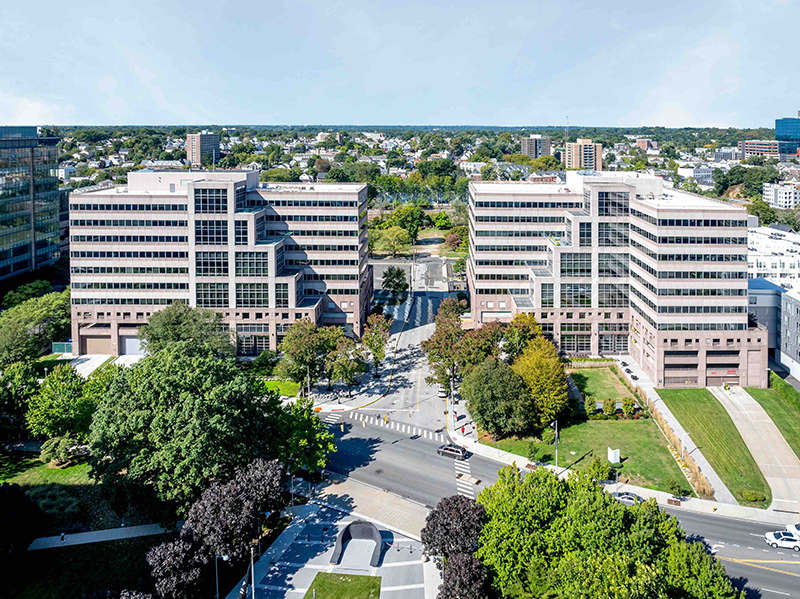News:
Connecticut
Posted: March 20, 2008
Connecticut multifamily properties continue to attract investors
Healthy job growth in Connecticut's major metropolitan areas, tighter mortgage underwriting standards and rising residential foreclosures are expected to generate solid demand for Connecticut apartment properties in 2008. Apartment development has remained in check, and only a moderate increase in completions is anticipated this year. In the months ahead, tenant demand for rental housing will be driven by a modest rate of job growth in the market, and supplemented by strong employment in New York City and Hartford, two major employment centers for Connecticut residents. High home prices in Fairfield County and a healthy balance between housing supply and demand in New Haven County will also support solid demand for rental properties.
As for new supply in urban areas, projects scheduled for completion by year-end 2008 will increase rental stock 1.6% in Fairfield County, causing vacancy in the metro to increase. Future construction in the market will be centered in Stamford, which possesses a large employment base, and in Bridgeport, where two large mixed-use projects with residential components are progressing through the pipeline.
New Haven continues to benefit from a large, growing student population, who are traditionally renters, in a market that is supply constrained for both single and multifamily development. In addition, downtown New Haven has experienced a rebirth by capitalizing on its cultural attractions while becoming a popular area for residents priced out of the New York market. Also, the proposed $430 million Yale-New Haven Hospital Cancer Center received state approval last year and is expected to create more than 500 full-time jobs, in addition to 350 construction positions.
Central Connecticut remains a target for multifamily investors, particularly those interested in capitalizing on the urban renewal efforts shaping Hartford. Strong operating fundamentals should remain intact through 2008. Meanwhile, opportunistic investors and savvy developers will continue to track the emerging New London/Norwich area. Developers building well-positioned apartment projects should benefit from the echo boomers and retiring baby boomers cohort.
A recent spate of multifamily transactions across the state has garnered the attention of investors, thus attracting more sellers to the market. Class A properties in and around the city of New Haven and portions of Fairfield County, where single family housing is expensive, will likely trade at cap rates in the high-5% to mid-6% range, up slightly from 2007. Meanwhile, Class B/C properties in centrally located communities, such as Waterbury and Meriden, will continue to attract buyers seeking to add value either by raising occupancy levels or by lifting rents to current market rates or higher.
After years of inexpensive capital flowing into the commercial real estate market, a drop off in demand for mortgage-backed securities has caused conduit lenders to scale back dramatically. In fact, conduits have virtually exited the lending market. The subprime residential collapse is largely to blame for the initial capital markets shock last summer, which caused a temporary shutdown of capital flows into commercial real estate. Residential subprime losses will climb further this year, resulting in overall volatility across credit markets. The commercial mortgage market has bounced back to some degree, but fears that lax underwriting standards have compromised the integrity of CMBS pools continue to swirl.
Moderate economic expansion is forecast this year, as healthy business investment and stronger export activity help to offset slower consumer spending growth and the drag of housing related industries. Tighter residential lending standards are exacerbating housing market woes. Existing single family home sales are down 25% from one year ago, and available for-sale inventory has increased 45% to 10.5 months of supply. Apartment owners are facing added competition from shadow rentals as a result but will remain net beneficiaries of the housing downturn due to the expanding renter pool. In addition to greater apartment renter retention generated by more stringent mortgage requirements, owners will also benefit from the return of many homeowners to apartments as ARMs reset at substantially higher rates.
Given the backdrop of a resilient and stable employment base, coupled with the meltdown in the single-family housing market, apartment fundamentals are expected to remain steady in Connecticut for 2008. As echo boomers continue to change the demographic profile of apartment communities throughout the state, coupled with nominal new construction - Connecticut is well poised for continued long-term growth in both occupancy and rental rates and it remains a preferred market for investment by both private and institutional apartment investors.
Steven Witten is a senior investment associate in the New Haven office of Marcus & Millichap Real Estate Investment Services.
Tags:
Connecticut
MORE FROM Connecticut
CBRE brokers sale of Stamford Towers - 326,468 s/f Class A office
Stamford, CT The CBRE team of Jeff Dunne, Steve Bardsley, and Travis Langer, in collaboration with David Block, completed the sale of Stamford Towers, located at 680 & 750 Washington Blvd. CBRE represented the seller, CBRE Investment Management, and procured the buyer, a joint venture of Lamar Companies

Quick Hits










.png)
